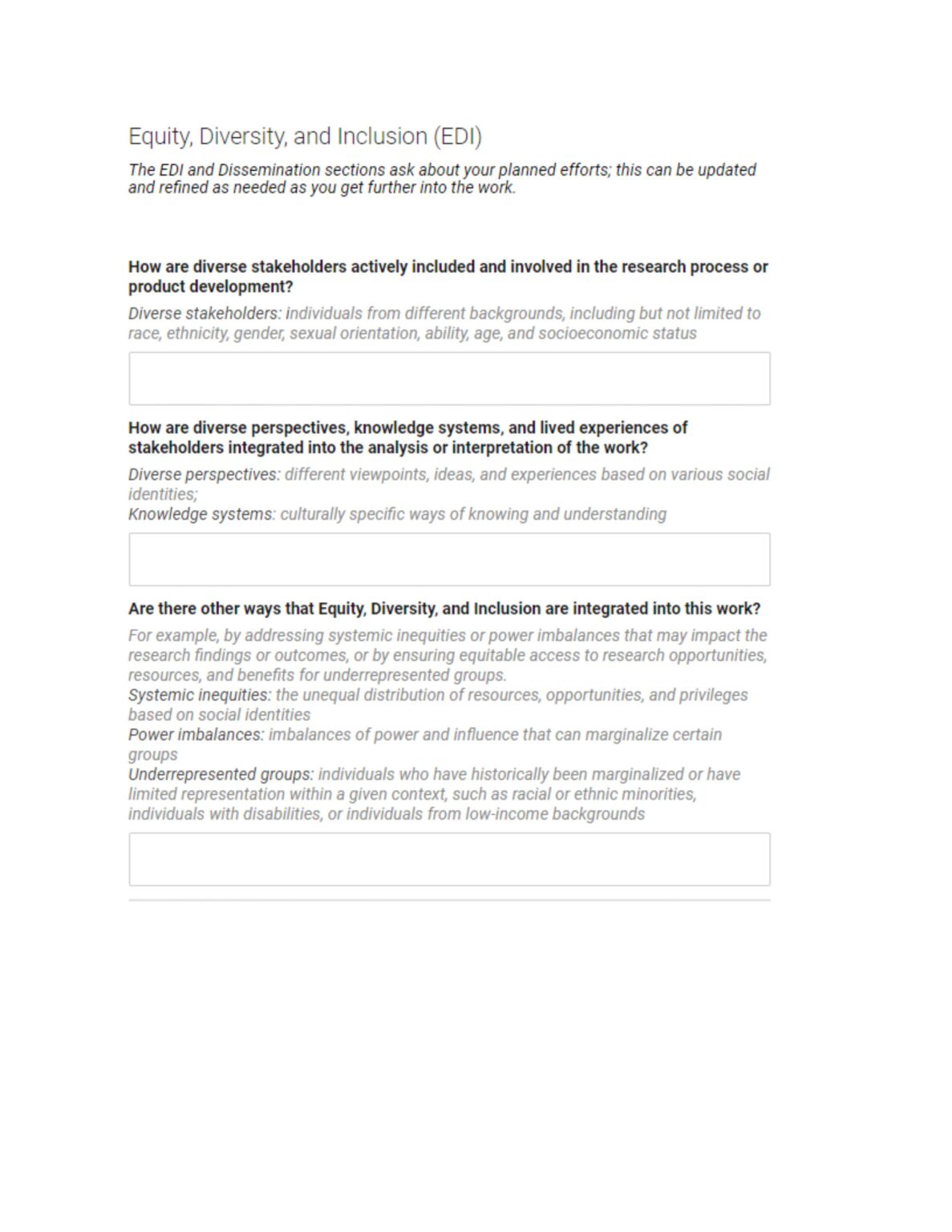EDI Best Practices Spotlight: Brown University
The JCOIN Research Clinical Research Center (“the Center”) based at Brown University utilizes two emerging practices to promote equity, diversity, and inclusion (EDI): an EDI workgroup and product tracker. These efforts foster transparency and accountability, and advance meaningful social impact throughout the Center’s three-site hybrid implementation-effectiveness study. Their JCOIN study is designed to increase the use of medications for opioid use disorder in probation and parole agencies.
The Center’s internal EDI workgroup consists of volunteer team members across the three sites, including members with lived experience and diverse perspectives. In the beginning stages of the group's formation, they centered EDI at the forefront of their efforts by developing a charter that outlines the workgroup’s purpose, goals, milestones, and planned activities, and composing a mission statement that articulates the group’s commitment to EDI. The EDI workgroup regularly reviews progress, identifies areas for improvement, and implements targeted initiatives to enhance EDI within the Center’s research and dissemination activities. The EDI workgroup members serve as ambassadors to the rest of the team and workgroups, integrating and highlighting EDI considerations and perspectives into their work.
The Center aims to ensure that each product, publication, and resource is relevant to, and appropriate for, the diverse JCOIN stakeholders. The Center uses Smartsheet, a commercial product, to track publications and to plan and monitor their efforts. Smartsheet serves multiple practical purposes:
- Report the products that Center members are planning;
- Help authors prepare for pre-registration when applicable; and
- Support authors in considering how to identify their intended audience and integrate EDI principles into their work as early as possible.
The Center’s EDI workgroup and publication tracker helps refine EDI and dissemination-related questions to make them more specific, actionable, and incorporate supportive definitions. Through collective efforts, the Center strives to create an inclusive and equitable environment that respects the diversity of team members and stakeholders. These EDI and dissemination questions include:
- How are diverse stakeholders actively included and involved in the research process or product development?
- How are diverse perspectives, knowledge systems, and lived experiences of stakeholders integrated into the analysis or interpretation of the work?
- Are there other ways that Equity, Diversity, and Inclusion are integrated into this work?
- How would someone describe the intended audience of this product/publication?
- How can you reach diverse audiences and effectively communicate the implications?
Stakeholder Engagement Example
The Center’s EDI team actively collaborates with project stakeholders, including researchers, community treatment providers, community supervision partners, peer specialists, the Center’s target client population, and individuals from underrepresented groups to ensure that diverse perspectives (e.g., those with lived experience) are considered in decision-making processes and product development. An example of a product is the Community Supervision and Medications for Opioid Use Disorder toolkit developed with the Opioid Response Network, which includes six short online learning modules and complementary patient- and staff-facing resources. The Center’s team consulted with multiple stakeholders from community supervision in developing the product to ensure that they included the appropriate concepts for the target audience, used the most appropriate communication channels, and had the right literacy level. Experts from the treatment side verified the accuracy of the content.
(EDI Questionnaire Shown Below)



